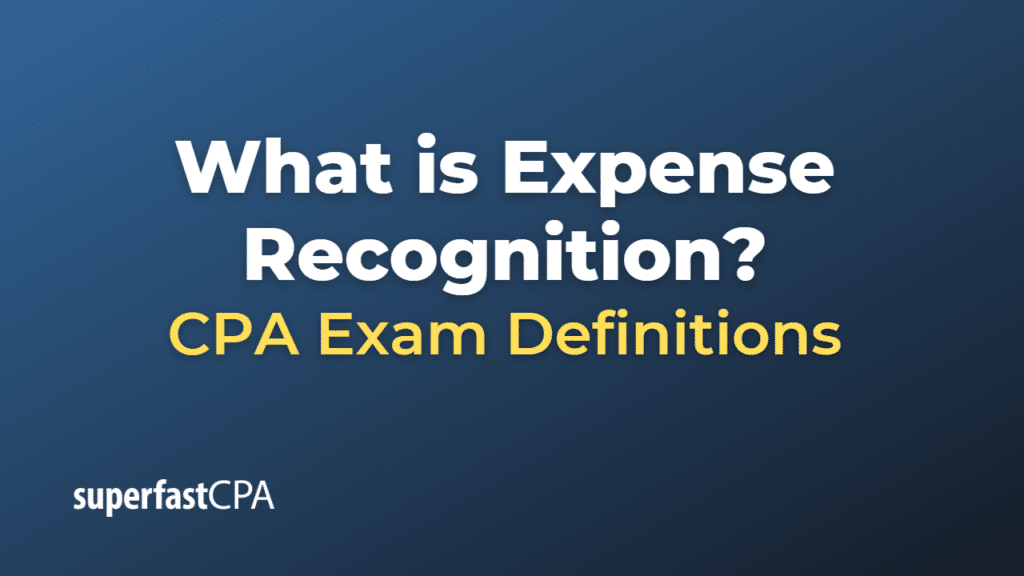Expense Recognition
Expense recognition, often associated with the matching principle in accounting, is a key concept that dictates when an expense is recognized (recorded) in the books of accounts. According to this principle, expenses should be recognized in the same accounting period as the revenues that are earned as a result of those expenses. This method allows for a more accurate depiction of a business’s profitability for a specific period.
Let’s consider an example. A company pays $12,000 in January for a year’s worth of insurance coverage. According to the expense recognition principle:
- Instead of recognizing the entire $12,000 as an expense in January (when the payment was made), the company would recognize $1,000 per month for the entire year ($12,000 / 12 months).
- This way, the insurance expense is matched to the periods it pertains to, rather than being entirely expensed in the month the payment was made.
This principle applies not just to expenses, but also to capital expenditures. For instance, if a company purchases a machine that will be used for 5 years, it doesn’t record the full cost as an expense in the year of purchase. Instead, it capitalizes the machine as an asset and then depreciates the cost over the 5-year life of the machine, recognizing a portion of the cost as an expense each year.
The expense recognition principle is an integral part of accrual accounting, which records revenues and expenses when they are earned or incurred, regardless of when cash is actually received or paid. This method provides a more accurate picture of a company’s financial health than cash basis accounting, which records transactions only when cash changes hands.
Example of Expense Recognition
Let’s consider a fictional software development company, “TechDev Co.”
Scenario: TechDev Co. takes on a project to develop a software application for a client. The project is expected to last for six months, starting in January and ending in June. The client will pay TechDev Co. a total of $60,000 at the end of the project in June.
As part of the project, TechDev Co. incurs expenses for software engineers’ salaries, cloud services, and other resources. These costs total $30,000, spread evenly over the six months of the project.
Here’s how the expense recognition principle would apply:
- Revenue Recognition: Even though TechDev Co. will receive the $60,000 payment in June, it recognizes the revenue evenly over the six months of the project. This means it recognizes $10,000 of revenue per month ($60,000 / 6 months).
- Expense Recognition: Similarly, TechDev Co. recognizes its expenses evenly over the six months of the project. This means it recognizes $5,000 of expenses per month ($30,000 / 6 months).
In this way, TechDev Co. is matching its expenses to the revenues they are helping to generate. Each month, it is recognizing $10,000 of revenue and $5,000 of expenses, resulting in a net income of $5,000 per month.
This approach provides a more accurate view of TechDev Co.’s profitability during the project. If it were to recognize all the expenses when incurred and all the revenue when received, it would show a loss for the first five months and a large profit in the last month, which would not accurately reflect the company’s performance over time.













